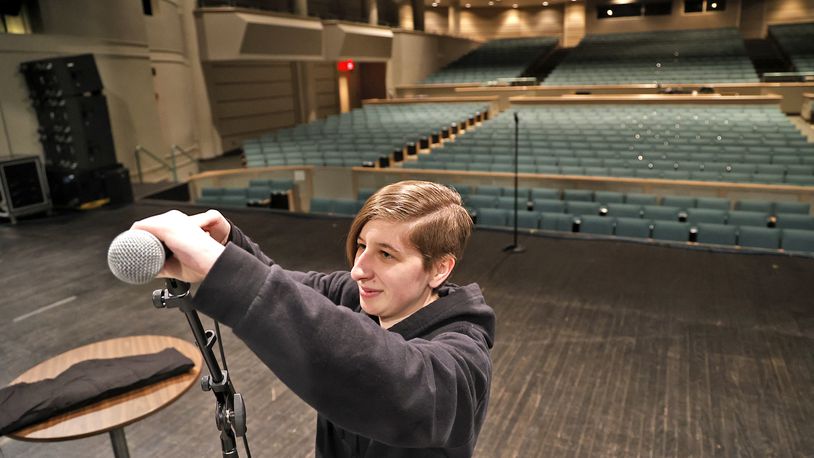The new study released March 15 was produced jointly by the National Endowment for the Arts and the U.S. Department of Commerce’s Bureau of Economic Analysis. It evaluated each state’s arts and cultural industries, their growth rate, employment, compensation of employees and national rankings among other specialties.
“The data reflect what many artists and arts professionals experienced in 2021 — a partial rebound and ongoing recovery, thanks to the resilience of the many Ohioans working in the arts,” said Donna Collins, executive director of the Ohio Arts Council.
The study found:
- Arts and culture industries employed 158,206 Ohioans in 2021, totaling $11 billion in compensation.
- The economic output of Ohio’s arts and culture sectors ranked 11th in the nation, and the growth of this measure ranked 35th. Since 2020, the sector’s output has grown 9.4% in Ohio, compared with an increase of 14.4% for the nation.
- In 2021, Ohio ranked 8th among all states in arts and culture employment and 36th among all states in employment growth in this sector. Since 2020, arts and culture employment has grown 3.5% in Ohio, compared with an increase of 5% for the nation.
- In 2021, Ohio ranked 11th among all states in arts and culture compensation and 32nd among all states in compensation growth in these sectors. Since 2020, arts and culture compensation has grown 8.5% in Ohio, compared with an increase of 11.3% for the nation.
- Average compensation per wage-and-salary job in Ohio’s arts and culture industries was $69,255 in 2021, compared with $72,771 for all salaried jobs in the state.
The analysis shows that while the total nationwide economic value added by arts and cultural industries increased by 13.7% from 2020-2021, groups such as independent artists (as an industry), performing arts organizations such as theater, dance and opera companies, and arts-related construction among other entities did not return to pre-pandemic levels.
However, the overall arts economy in 2021 accounted for 4.4% of gross domestic product, or $1.02 trillion, considered a new high-water mark.
“Although the pandemic negatively impacted our sector, among the worst affected in terms of economic loss and unemployment, we persevered, thanks in large part to one-time funding with bipartisan support at all levels of government. Work remains to return to pre-pandemic levels of economic activity, but the data show just how important and integral the arts and culture sector is to a strong, vibrant economy and society,” Collins said.
‘A lot has changed’
Ty Sutton, president and CEO of Dayton Live, said: “We’ve had a lot of recovery in the arts but it’s also been an uneven recovery. It’s been ups and downs and starts and stops.”
In late 2021, he said, recovery was beginning for arts groups, “but then there was Omicron and everything started to slow down.”
Credit: Bill Lackey
Credit: Bill Lackey
At the start of the pandemic, Sutton says Dayton Live laid off 90% of its workforce. He says they are still in the process of rehiring to return to “full strength,” particularly its educational and development staff. He also noted that only within the last four to five months has there been a feeling within the organization of a return to normalcy regarding patron behavior and buying habits.
“A lot has changed and, in some ways, we’re never going back,” said Sutton. “Patrons are buying later and they’re making decisions later. The pandemic caused a lot of us not to plan things in advance in case (an event) wouldn’t happen. So, we have had to change our advertising habits.”
Sutton noted Dayton Live has seen a slower return for older audiences, but said they are returning.
The Springfield Symphony Orchestra had a similar experience when its shows resumed. The symphony has started to seek big-name guests or arrange joint productions in hopes of attracting a more diverse audience.
‘People are coming back’
The Dayton Performing Arts Alliance reports at the end of its 2021-2022 season, audiences returned to 52% of pre-pandemic levels. Current statistics stand at 70%. Organizers are embracing the trend as a hopeful guide to build upon, especially in attracting broader demographics and increasing ticket sales.
“People are coming back,” said Patrick Nugent, president and CEO of the Dayton Performing Arts Alliance. “Our fundamental conviction is that the arts are for everyone. Our driving purpose is to inspire people of all ages and backgrounds to fall in love with the performing arts.”
Nugent said their $5 ticket program has sold about 5,000 tickets in the last 18 months.
“I have also watched the average age of the audience plummet and watched its diversity broaden,” he said. “We want to continue those trends.”
Sutton’s determined to not lose sight of a higher goal which not only applies to Dayton Live but all arts groups across the region.
“People want to see a show and have a good time,” he said. “We should be in the business of bringing joy to people, something that lifts their soul. We have to be in the business of delivering a great experience. And there’s no substitute for the live experience, whether it’s seeing a great piece of art or spending time in a theater.”
About the Author
